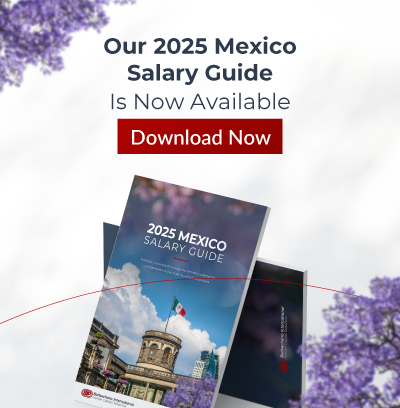
Here’s What You Should Do To Remove (Un)conscious Bias When Hiring
Companies aren’t just clamoring to prioritize diversity and inclusivity when building their workforce because it’s the right thing to do. Studies have shown, as reported by outlets like Forbes, that diverse workforces increase a company’s bottom line. But for training HR managers, recruiters, and other hiring managers to eliminate their bias for or against specific individuals has proven to be easier said than done. These people come to these roles with many preconceived notions that will translate into active and unconscious bias when interviewing and hiring individuals. Training them to identify their personal preferences and remove them requires a dedicated and disciplined approach. The result can be a more diverse and inclusive workplace that is devoid of unhealthy choices.
Hiring bias is when those who control the hiring process favor certain groups of people over others. They might favor one gender, an age demographic over others or be against certain races, ethnicities, or religions. First of all, hiring managers must understand that discrimination is illegal and that a business is liable if its hiring practices are unlawful. So, employers have a multi-type stake in training their HR professionals to avoid these biases that could constitute an illegal proceeding if proven.
The decision-making process can indeed be complicated. Still, conscious and unconscious biases can muddy the hiring process to the degree that detracts from the overall success of the company.
Build Awareness
A one-time discussion of hiring bias or an annual revisit to the topic isn’t enough to root out conscious and unconscious biases among hiring managers. Companies that are serious about building a dynamic and diverse workforce where everyone feels respected, included, and valued know that they have to create awareness with repeated exposure to favoritism removal training. Businesses can prioritize bias awareness by meeting one on one or in groups with hiring staff. By repeatedly discussing topics related to bias, managers can demonstrate how committed their employer is to removing unhealthy hiring practices–and let these staffers now that they are obligated to practice healthy hiring techniques that are devoid of inequality.
Target All Company Policies and Job Descriptions to Hunt down Biased Language
Language can contain a wealth of unconsciously biased terms. Companies and their HR teams should root out this problematic language to ensure that they are not singling out one group over another. A sales associate position description that contains language like “aggressive, strong, or bold” could be off-putting to women who might feel more inclined to apply for positions containing descriptors like “excellent communication skills” or confident communicator.” Some languages may even be more overtly biased. For instance, it’s easy to spot the problem with a sentence like: “we’re looking for an up and coming self-starter” or “we’re hiring an assistant to the chairman.”
Instate a Blind Resume Policy
If you’re finding that your team isn’t hiring in a manner that satisfies your diversity goals, instate a blind resume policy. Companies can do this in various ways, but the idea is to remove any information that could lead to bias such as an applicant’s picture, age and other potentially discriminating information. Once this information has been removed, hiring managers can more objectively evaluate resumes by focusing on the skills and experience candidates possess.
Overhaul the Interview Process
Interviews can be fraught with bias problems. First of all, it’s ideal for standardizing interview questions to ensure that all candidates are asked for the same type of information. This will prevent hiring staffers to ask potentially problematic questions. On the other hand, even with standardized evaluations, the risk to derail into the highly biased territory is high. For instance, it’s commonplace for interviewers to address an applicant’s lapse in employment. A female candidate might make mention of a pregnancy. Will your manager exhibit bias against her because she has children? Is that bias born out when men mention their children during an interview?
Gather your team and talk about interview questions and potential follow-up questions that can lead to a bias situation. If you’re concerned that your hiring team is struggling to eliminate biases, a solution can be to interview in groups. Employees will be more inclined to stick to your script if they know they’re words are being witnessed by another employee.
It’s only natural that a company would want to eliminate unconscious and conscious bias in one fell swoop. But, the reality is that it takes time, training, and practice to root them out. Moreover, companies who continually address the topic with both veteran and new employees are in a stronger position to keep bias out of their business.
Get in Touch with an Expert
At Barbachano International, we understand how important these human resource issues are for companies that operate globally. Feel free to contact us or visit our blog.
By Octavio Lepe
Director, Executive Search
Octavio is the search practice leader for Sales & Marketing, Agribusiness, and D&I in the Americas.
About Barbachano International
Barbachano International (BIP) is the premier executive search and leadership advisory firm in the Americas (USA, Mexico, Latin America, & Canada) with a focus on diversity and multicultural target markets. Outplacement and Executive Coaching services are provided by our sister allied company Challenger Gray & Christmas. Since 1992, BIP and its affiliates have impacted the profitability of over 50% of Fortune 500 Companies. BIP has been recognized by Forbes as Americas’ Best Executive Search Firms and currently ranks #27 and #3 on the West Coast. Headquartered in San Diego, California with satellite offices in Florida and Mexico. As member-owners of NPAworldwide Recruitment Network, we are supported by partner offices in over 50 countries.



